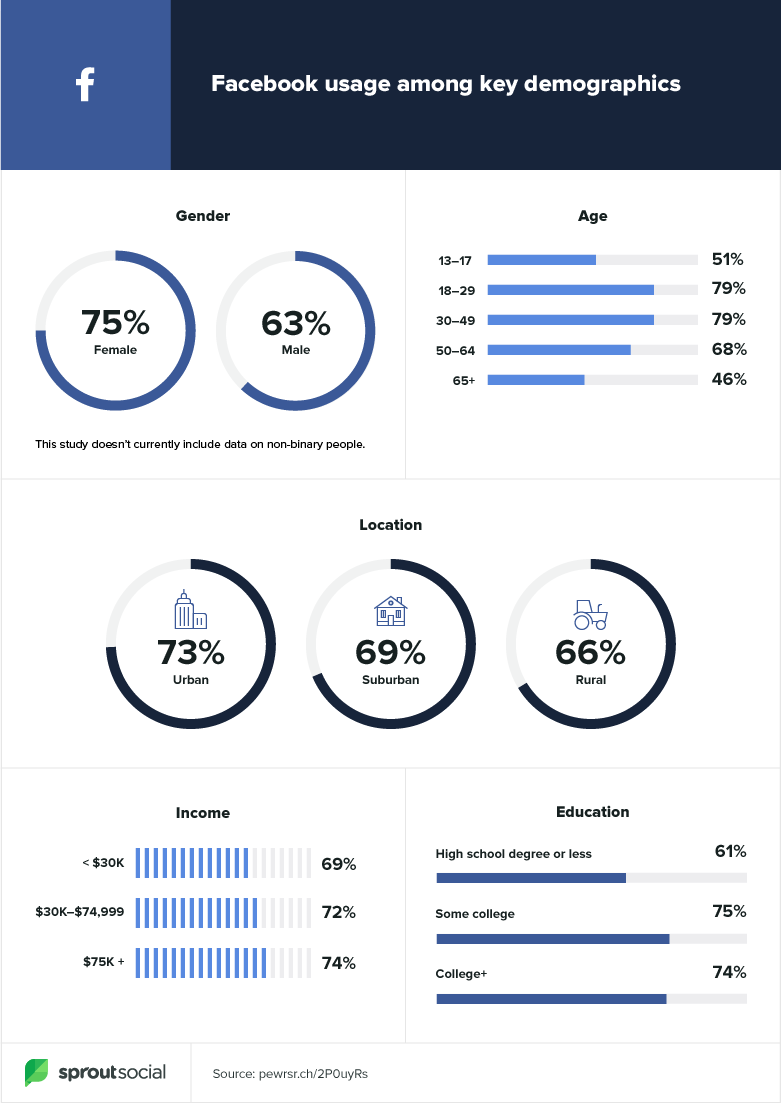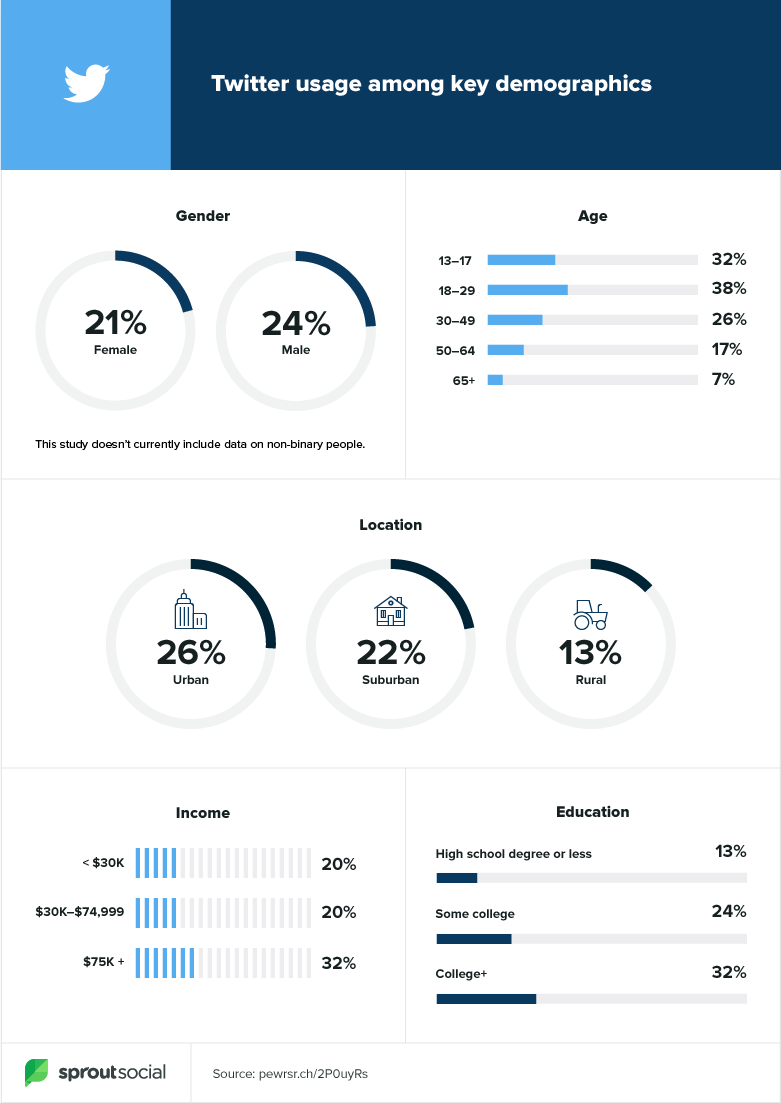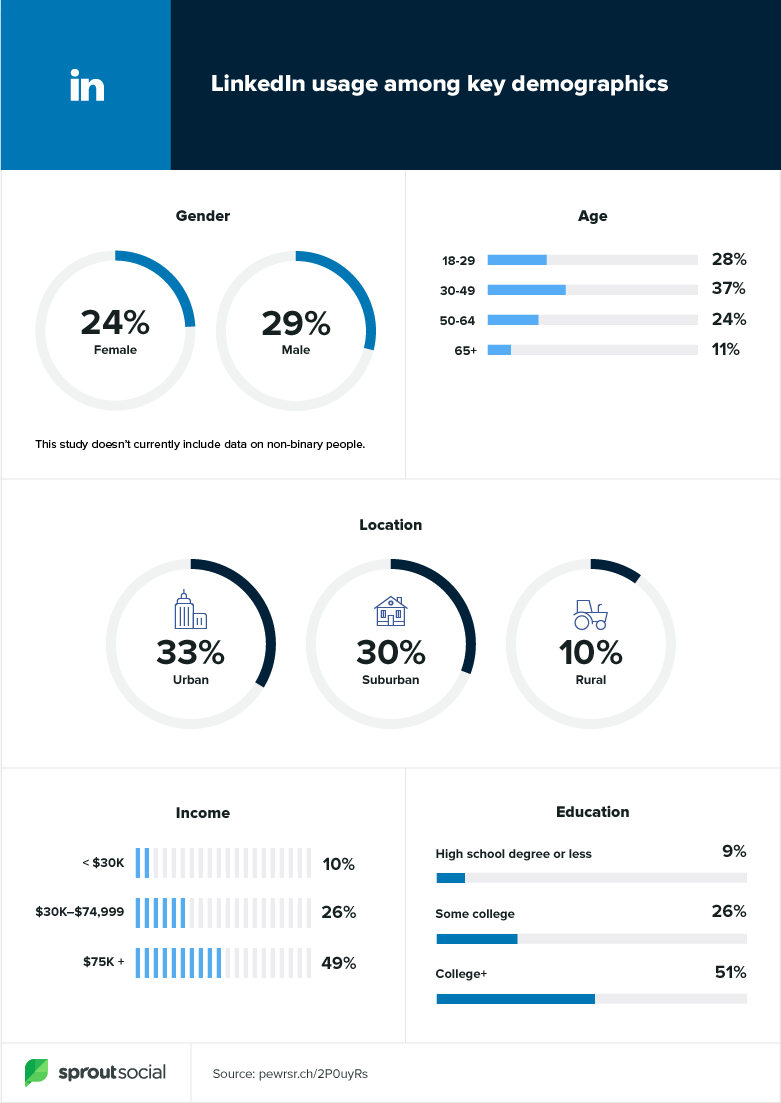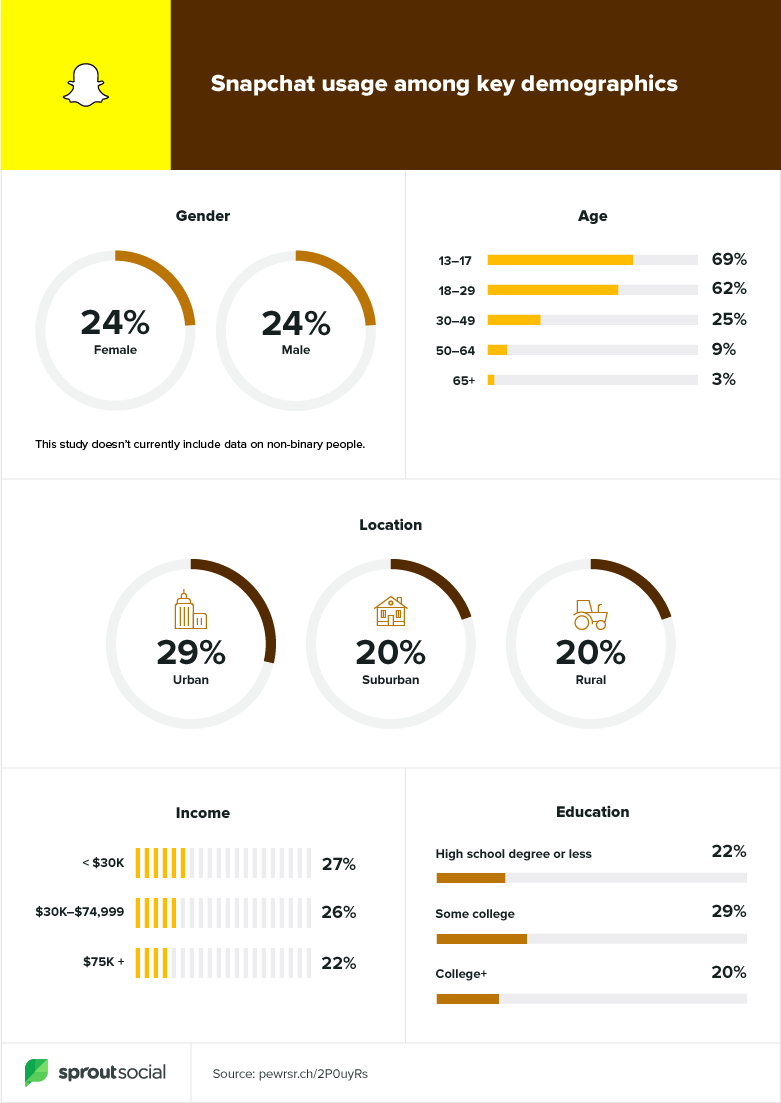With 2020 (finally!) coming to a close, it’s time to start planning your big marketing moves for next year. Promoting your business is your main objective, and to do that you have to go where the people are. Enter social media. If you’re going to embrace the ever-shifting world of social media to promote you or your business, you’d better have a plan. Luckily we’ve done some of the heavy lifting for you and researched the predicted marketing trends of 2021. Keep these in mind and you’ll be ready for what’s coming down the pipeline this new year!
It’s been a rough year for everyone, including Facebook. The Social Network has faced claims of monopoly, censoring opposing viewpoints, and exacerbating political strife in the country. There have even been calls for ad boycotts and a critical documentary detailing the divisive effects of a platform designed to bring people closer together. Despite all this, Facebook’s bottom line looks as strong as ever, and the company is looking toward further innovation in the Network in 2021.
Facebook’s big push is integrating eCommerce into the platform, allowing consumers to purchase products and services seamlessly through the Facebook and Messenger platforms. The Shops feature on Facebook (as well as on Instagram) is the first move toward driving eCommerce on its platforms. This feature will streamline the process of creating an online storefront on the most-used social app. The app will offer familiar online presentation options and one-click/touch transactions as well as simplifying payment. While Facebook’s intent is to target India and Indonesia, where the shift toward online shopping has just begun, Facebook’s eCommerce push will benefit all users.
Facebook is also looking to make in-stream promotion easier in the Facebook Watch function. With the rise of live streaming, Facebook wants to create a way to easily access payment methods within the live stream without missing a second of what’s happening on-screen.
If you want to take advantage of these advancements, you must first know who you’re dealing with. As we’ve already discussed, Facebook is the third most popular website and the most popular social platform with 1.79 billion users daily. It’s also the fifth most downloaded free app in the App store. The majority of users are aged anywhere from 18 to 49, but 65+ is the fastest-growing group of users. 75% of women use Facebook as opposed to 63% of men, so while women make up the majority of users, Facebook can still be a great avenue for reaching multiple demographics.
Something else to keep in mind: Baby Boomers and most Gen-Xers were born before the internet, and 53% of users do not understand how the posts on their newsfeed are selected. That means that YOU have to understand Facebook algorithms and your audience. The best way to keep your Facebook users in the loop and seeing your content is to create engaging and shareable content. The more they interact with your post, the more prominent your content will be in their timeline.

Other than the additions of the new character limit and Fleets, Twitter remains mostly unchanged. Most changes will be in the Fleet features, mostly trying to stay competitive in the format dominated by Snapchat, TikTok, and Facebook stories. It is expected that Twitter will try to keep pace by adding AR options and other visual tools. While these can be new and exciting ways to reach audiences, it probably won’t become a major element of Twitter.
Another interesting new feature to be lauded by Twitter has been described as “a clubhouse-like, meet-up audio feature.” It’s called Audio Spaces, and while it seems like a fun, exciting tool to play with, like Fleets, it isn’t expected to become a cornerstone element for Twitter.
The biggest innovation for Twitter coming in 2021 is the expansion of Topics. Because of Twitter’s reputation for being the home of breaking news, Twitter wants users’ interests to carry more weight than the profiles they’ve chosen to follow. It has been rumored that Twitter could expand this idea of creating Topic spaces, which would allow group interaction curated by the Twitter team for sporting events, live streams, and conferences.
While Twitter isn’t as popular as Facebook, and the usage isn’t as focused on eCommerce as Facebook, there’s still a reason to have a Twitter presence. First, tweeting out links to landing webpages, blogs, and contact forms boosts your SEO standing.
Second, there is still a large usership on Twitter. Twitter averages 330 million active users every month, with 24% of males using Twitter as opposed to 21% of all females. Twitter users are also typically better educated in the academic sense. 59% of Twitter users are college graduates, and 32% have advanced degrees. 80% of Twitter users are affluent millennials.
Here’s what you need to know. If you’re looking to capitalize on Twitter, first you need to have a good idea of what your target audience looks like. If you’re looking for Baby Boomers or Gen-Xers, you may want to bypass Twitter. If you’re looking to sell luxury products to affluent millennials, Twitter may be a good space to utilize. There is also a large group of people your ads can reach—145 million daily users see ads, a number that’s up by 17% from last year.
Users are 31% more likely to remember something they’ve seen on Twitter than anywhere else on the internet. That means that if you’re trying to build a brand, posting on Twitter has more staying power with your audience. To get the most out of your tweets, add a gif or a video. Tweets with video are six times more likely to be retweeted and see ten times more engagement than those without. Users are 70% more likely to remember an advertisement if it is in the form of an in-stream video ad. Even better, viewers’ purchase intent went up 6% after watching the in-stream video.
By targeting the correct demographics and using a variety of content tactics, you can create an effective eCommerce channel even on a website that is not pushing an eCommerce angle.

Since it’s owned by Facebook, Instagram is pursuing many of the same innovations as its parent company. To be specific, Shops is being further developed as well as ways to streamline the purchasing process in the app. One-click purchasing is in the works as well. Instagram is also looking to build upon its roster of AR tools with AR try-on options. Rumors suggest that these features may even be compatible with Facebook’s AR glasses.
The biggest shift, however, comes in Instagram’s feed. Due to the rise in popularity of TikTok and Facebook Stories, Instagram is moving to a Stories feed. The feed will be similar to TikTok’s Home Video Feed, making the current feed a secondary element. It’s predicted that users will be able to toggle between the current setup and the Stories feed setup, so you’ll need to consider this before abandoning your current Instagram strategy.
Instagram has 1 billion active users every month, with 43% of users being female and 31% being male. The most active users are 13- to 17-year-olds at 72%. The next age group, 18- to 29-year-olds, make up the second biggest group at 67%. A little under half (47%) of 30- to 49-year-olds use Instagram. After that, usership drops off with Gen-Xers (23%) and Baby Boomers (8%).
Because Instagram is based on the sharing of photos and videos, whatever strategy you choose to follow needs to be based on creating visually stunning content. While copy is important on other platforms, the “perfect caption” is ten words long. Instead of telling, it is more beneficial to show. How-to videos are the most popular content on Instagram.
Instagram takes creativity to get the most out of its eCommerce potential, but the effort can be very rewarding. 83% of Instagram users discover new brands and services through the app. Being able to create eye-catching images and videos can lead to serious brand-building through Instagram.
Tik Tok
TikTok is an interesting case. First, it’s the hottest new social media fad, exploding to 1 billion users at the beginning of 2020. TikTok then endured restrictions, security reviews, and accusations of censorship. The platform still stands, but the question is for how long? TikTok, like Facebook and Instagram, is making the eCommerce push, trying to escape the fate of another almost identical app, Vine. Vine had a similar trajectory to TikTok but went under when creators couldn’t find ways to monetize their creations, and instead jumped ship to YouTube and other platforms to make real money. Considering the legal issues that TikTok has faced in 2020, focusing on eCommerce to help create revenue for TikTok and its creators is vital in 2021.
The Chinese version of TikTok (Douyin) has already incorporated in-stream purchasing options, one-click purchase options, and further eCommerce inclusions. These measures have been met with major success. In 2020, Douyin brought in $122 million through these eCommerce inclusions. 2021 should see TikTok incorporate these features into the international app.
If you’re looking to predict what is going on with TikTok, look to it’s top proving ground, China. Douyin recently rolled out several new features. One of the first things Douyin has done successfully that could be incorporated into TikTok is ranking accounts and segmenting them into categories. This could help stimulate eCommerce on the app, incentivizing business activity. TikTok is also working on advanced options for business profiles and profile links. TikTok also wants to create valuable partnerships with musicians through sponsorships and promotions. This program would also allow others to get in on the partnership, allowing for a musical marketplace where talented musicians can find others who are willing to sponsor their music.
TikTok’s audience is generally younger, as 41% of users are 16 to 24 years old, and 50% of its global audience is under 34 years old (26% being between 18 and 24). The app is used more by males (56%) than females (44%). 26.5 million of the 1 billion users are from the United States, and 43% of new TikTok users come from India.
TikTok is interesting for businesses because successful advertisements will be based on creative video content going viral. For larger brands, the opportunity may be finding influencers on the app who can promote a product or service to their audience. For smaller brands, behind-the-scenes videos, how-to’s, and short, fun videos based on problems related to your industry could be the answer to leveraging this marketing opportunity. If your business wants to reach global audiences and younger people, TikTok may be the answer to promoting your product.
While LinkedIn may not be an exciting and new frontier, it does hold some marketing value for those who know how to leverage the platform. LinkedIn passed 770 million users in 2020 and is known for having record engagement by its users. The platform also is 277% more effective than Facebook in generating leads. This platform is known as the platform for professionals, and it’s the most popular one used by Fortune 500 companies. Just over 50% of marketers use LinkedIn, the majority of marketing being directed at B2B transactions. LinkedIn is a place where business partnerships are made, not just routine B2C sales. LinkedIn can be a great way to creatively and professionally promote your business.
Due to the effects of COVID-19, the business world has looked quite different this year. Offices are operating at less than capacity, business meetings are held virtually, and events are live-streamed. Social media platforms have noticed the value of video conferencing and live streaming, and LinkedIn is no different. LinkedIn introduced Events, which has proven to be a low-cost way of hosting events. Live video is the most engaging content on the platform. You can look for LinkedIn to double down on Events by adding more video tools and options.
Also, expect a dedicated video section in LinkedIn. As previously mentioned, video is the most engaging content on the platform, and video content is twenty times more likely to be shared than any other content. A dedicated video section could further shift the focus of the platform toward video content. It could lead to monetizing popular content creators through pre-roll, post-roll, and mid-stream advertisements.
You can also look forward to LinkedIn refining its data-matching insights. With users’ employment information, demographics, interests, and commonalities, LinkedIn is finding new ways to provide value in professional journeys and continuing education. LinkedIn has already taken innovative “first steps” with its Career Explorer tool, which assesses your employment history, skill set, and interests to give the best insights for potential career paths and progression. These insights show how others with common backgrounds and skillsets navigate your industry and provide learning modules to help up your game.
In case you’re curious, 29% of men and 21% of women use LinkedIn, with the highest user rates among 30- to 49-year-olds (37%) and 18- to 29-year-olds (28%). Breaking the age groups down even further, 44% of 25- to 30-year-olds use the app, and 37% of 30- to 49-year-olds do as well. Almost a quarter of 50- to 64-year-olds (24%) use the app, but there’s a sharp drop off in users (11%) in the 65+ age group. LinkedIn users are also the most academically educated, with 51% holding a bachelor’s degree or above. They are typically more affluent with 49% of users earning more than $75,000 a year.
These numbers should not be surprising. LinkedIn is a professional development app based on finding career paths, creating professional networks, maintaining an online resume, and forging partnerships. Like Dr. Colby Jubenville says, “Twenty-year-olds are getting in the game, thirty-year-olds are in the game, and forty-year-olds are trying to keep up with the thirty-year-olds because they’re so d*** good, and fifty-year-olds are asking themselves what they really want.”
By looking at marketing on LinkedIn through this lens, you can better understand where your marketing value should go. If your target is twenty-somethings who are searching for opportunities to better themselves, leverage entertaining but informative videos to gain their attention. Maybe you could offer forty-somethings a virtual conference based on learning new skills in their field. LinkedIn is a gold mine for lead generation and conversion; you just have to utilize its tools correctly.

Snapchat
Snapchat has continued to appeal to younger audiences, and it shouldn’t be expected to change in 2021. It’s the second-most used mobile app worldwide. Snapchat has kept younger eyes glued to screens through promotional partnerships, interactive activities, and AR options.
With its limited budget, Snapchat will look to build on its leading AR options and other successes. Snapchat already allows for QR scanning to provide contextual information, but now the app is working on barcode scanning, promotions, offers, and advanced AR tools like trying on clothes. There’s even talk of a Snapchat/Apple partnership, working together on each company’s next generation of AR glasses. Snapchat and Apple worked together on the iPhone X’s AR capabilities in 2017, and again on the iPhone 12’s visual additions and Lenses capabilities. Apple also announced that Snapchat would be one of the first partners with LiDAR capabilities.
Snapchat’s key strength has been creating short-form, tv-style programming that appeals to younger audiences called Snap Originals. These formats could see bigger celebrities joining the lineup, which could bring on bigger advertising opportunities for the app and its creators. This is important because Snapchat currently reports that 381.5 million people can be reached with advertisements on Snapchat.
Along with Facebook and Instagram, Snapchat is making a push toward eCommerce, looking to create value for its creators, allowing them opportunities to sell products in-stream. Snapchat has integrated with Amazon and is looking to allow more in-feed shopping tools.
Snapchat has some interesting demographics that will be important for your marketing strategy. 24% of both men and women use Snapchat. 69% of 13- to 17-year-olds use the app, and 62% of 18- to 29-year-olds use it as well. The number of users drops off sharply after that with only 25% of 30- to 49-year-olds using it, 9% of 50- to 64-year-olds, and 3% of 65+ using the app. The numbers of urban, rural, and suburban users are basically even. The educational backgrounds of users are diverse, with college grads, high school grads, and users with some college background but no degree using the app at nearly the same rates. User incomes vary as much as educational backgrounds.
Snapchat is the way to reach young people of all backgrounds. While reaching younger audiences with less direct spending power may not seem as important as reaching demographics with more spending power, Gen Z has influence over 48% of household purchases. Reaching younger audiences with AR tools promotions would be a creative way to leverage the opportunities of this platform.
2021 is shaping up to be a year full of innovation, especially in the social media sector. Knowing and understanding the new major pushes and changing demographics will be vital to crafting a successful social campaign. A well-informed campaign that uses new and creative ways to take advantage of the new social media platform features can be the opportunity for your business to hit a home run.

Up-and-Coming Social Sites
Other up-and-coming social applications could also be beneficial for your business, and we want to be sure you cover your bases with these lesser-known apps.
Caffeine
Poor Periscope, gone too soon. Twitter shutdown Periscope this December, but don’t despair. Caffeine is similar to Periscope. Caffeine allows its users to join as either viewers or broadcasters. Broadcasters create the content and viewers consume. By the way, Caffeine’s broadcasters boast some of the biggest names in sports, gaming, and entertainment. While demographics for this app are not widely available, it will probably be an app with a similar target audience as Snapchat.
Academia
If your industry includes research, you may want to consider checking out Academia. Academics and researchers can share research via this app. Users have uploaded over 22 million papers, and there are 129 million active users monthly. It used to be a free repository for research, but now the platform does charge fees to get authors in touch with those who want to read their research.
aNobii
If you’re an aspiring writer or publisher or an avid reader, you’ve surely heard of Goodreads. It’s a great outlet, but if you’re looking for another one, think about trying aNobii. It’s similar to Goodreads, where users can upload their books as well as rate, review, and discuss other books. It’s most popular in Italy but is available worldwide. Mondadori bought the platform in 2006, which was backed by Penguin, HarperCollins, Random House, and the HMV Group.
beBee
beBee is a platform built to allow professionals to collaborate on various interests and market themselves to employers, vendors, clients, and media. The goal is to help professionals build and share their own personal brands.
Blind
Blind is a professional network where 3.5 million professionals work together anonymously through private company channels. There you can find career advice, work culture suggestions, and feedback.
Valance
Valance is a platform specifically for African-American professionals. The goal is to highlight the Black professional community and create connections that create new opportunities for users.
Elpha
This is a social platform aimed at women professionals who want to build their careers. It looks a lot like LinkedIn but is designed to provide professional and personal support for professional women.
As you can see there are many social services out there. It is up to you to find which service best fits your needs and to leverage the innovations of that service to help reach your marketing goals. If you ever need help with your social media strategy give us a call, we’re always happy to help.






